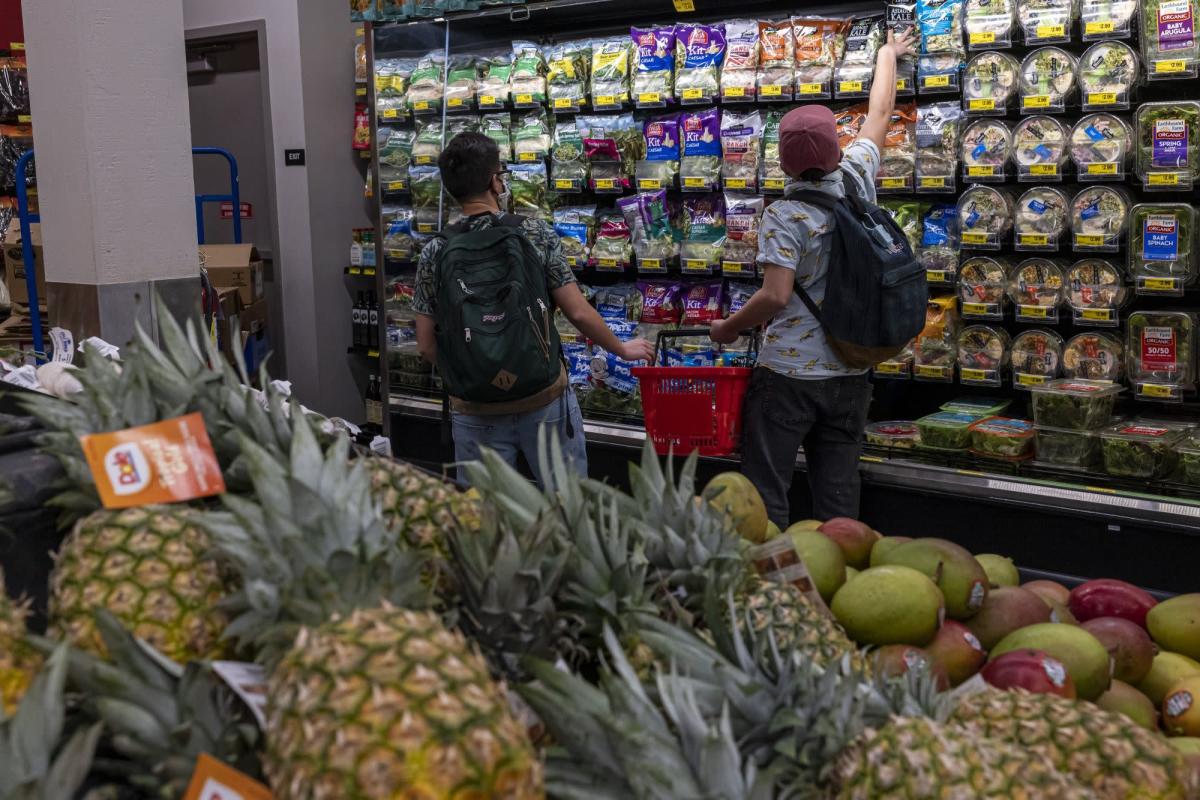U.S. Inflation-Adjusted Spending Stagnates as Prices Surge

(Bloomberg) — U.S. consumer spending, adjusted for inflation, stagnated in November as the fastest price gains in nearly four decades eroded purchasing power.
Most Read from Bloomberg
Purchases of goods and services, after adjusting for higher prices, were little changed following a 0.7% gain in October, Commerce Department figures showed Thursday. Unadjusted for inflation, so-called nominal spending rose 0.6%, matching the median estimate of economists.
Underlying the spending figures are a series of crosscurrents. Buffeted by headlines about snarled supply chains, many Americans started their holiday shopping earlier than usual this year, helping to explain the strong advance in the prior month.
But consumers are also facing the fastest inflation in decades. With every trip to the grocery store and gas pump eating away a little more of their paychecks, people have less left over for discretionary purchases. And the new omicron variant of Covid-19 threatens to curb the incipient rebound in outlays for services.
The report showed Americans are spending more on essentials amid the pickup in prices. Money spent on housing and utilities increased last month, as did outlays on gasoline and food. The data showed inflation-adjusted spending on services rose 0.5%, the most in three months, while goods outlays dropped 0.8%, the first decline since July.
The S&P 500 advanced, trading near its all-time high. Treasuries fell, while the dollar rose.
What Bloomberg Economists Say…
“A flat reading on real consumer spending in November — even before omicron hit — suggests inflation may be starting to weigh on consumer resilience into year-end… The increase in services was widespread, a positive sign of rotation out of goods spending going into next year.”
— Yelena Shulyatyeva and Anna Wong, economists
Click here for the full note
The personal consumption expenditures price gauge, which the Federal Reserve uses for its 2% inflation target, increased 0.6% from a month earlier and 5.7% from November 2020, the highest reading since 1982. Those figures were in line with economists’ estimates, and followed an annual increase in the Labor Department’s consumer price index that was also the fastest since 1982.
The data come on the heels of a hawkish pivot by Fed officials, who have been under pressure to take action against overheating prices. Last week the central bank announced it would accelerate the end of its asset-buying program, and new interest-rate projections indicated policy makers favor raising borrowing costs by three-quarters of a percentage point next year.
Lower Savings
Consumers are saving less amid the rapid price increases. Adjusted for inflation, disposable personal income, or after-tax income, fell 0.2%, the fourth straight decline. The savings rate — personal saving as a share of disposable income — declined to 6.9%, the lowest since December 2017. Nominal personal income rose 0.4% last month.
Though federal stimulus has waned, a host of companies have hiked pay this year to attract and retain talent amid widespread hiring struggles. In November, wages and salaries rose 0.5%, following a 0.8% gain in October, the report showed.
The core price index, which excludes food and energy, rose 0.5% from the prior month and 4.7% from a year earlier, the fastest gain since 1983.
Ian Shepherdson, chief economist at Pantheon Macroeconomics, said he’s scaling back his forecast for the gain in fourth-quarter consumer spending on the grounds that “the omicron Covid wave appears to be hitting spending at restaurants.” The firm now sees outlays rising at a 5.5% annualized rate in the period, down from the prior 6% forecast, according to a note Thursday.
Other Data Thursday
-
A separate report showed applications for U.S. state unemployment benefits were little changed last week, suggesting historically low layoffs as the labor market continues to recover.
-
Orders placed with U.S. factories for durable goods rose in November by more than forecast, pointing to steady demand that will help drive production growth in early 2022, Commerce Department data showed.
(Updates with economists’ comments and opening trading.)
Most Read from Bloomberg Businessweek
©2021 Bloomberg L.P.




